
My affectionate portrait of Francis Bacon presents a rarer view of him. Of all of my favourite artists, the life of Francis Bacon fascinates me the most. This is my imagining of Francis, doing nothing except letting his mind drift—so that inspiration can flood in. “If I sit and daydream, the images rush by like a succession of colored slides.”
Most of the illustrations of Bacon you will see—copied directly from photographs—seem to depict him as one who is haunted by something, and lost. As if he’s staring into a dark abyss, knowing there’s no redemption for his black soul. It’s as if the perceived darkness and horror in his work reflects his own personality. There’s also usually an absence of colour—which is odd considering how colour-saturated many of his paintings actually are. I’m not sure if this perception of him was partly cultivated by Bacon himself. He was actually a man who lived large, partied, and enjoyed entertaining friends and bare acquaintances. But he gave very few interviews, spoke even less about his work, and so perhaps left a void which an enigmatically darker portrait of the man could fill in the public imagination.


Inspiration
Recently, I was wracking my brain for a subject to paint, and I remembered reading somewhere in one of the many Bacon biographies on my shelves, about how Francis said he found inspiration. As if in answer to that simplistic basic and oft-asked “Where do you get your ideas?” question, I seem to recall reading that he would lean back on his sofa, hands clasped around one knee, and just think about nothing, letting his mind drift. Daydreaming. (I hope the pose wasn’t actually one assumed by Dali (ugh) or Duchamp. I do seem to remember it in connection to Bacon, and it’s how I now imagine him). I’ve never seen a photo of him sitting like this, so I had to create it.
Taking what he said quite literally, I’ve imagined him in that pose, as the following happens: “If I sit and daydream, the images rush by like a succession of colored slides.” I’ve made the colours as vivid as his own work and of a “Monet Sunset” which was how he described the colours on his hand-coloured book of photographs of diseases of the mouth (!), which he picked up in a shop in Paris.
Francis also found inspiration amongst the piles of images which he tore from books and left all over his studio floor. Years of paint drips, creases, stains, tears and footprints would incorporate into them suggesting more images to him.
It is a literal piece, this. But then, it is an illustration. And I’ve also put 2 visual jokes into the piece. One is very unsubtle, and plays on the bare lightbulbs and pull-strings which dangled in his flat and studio and featured in his own paintings. Can you spot the other little joke? Here’s a clue: Francis was always open to the ‘accident’ in his creative process—which he would keep or reject, via keen artistic judgement; and he frequently put himself in serious physical danger, and risked his health through heavy drinking and lack of sleep. How he lived as long a life as he did is quite remarkable!
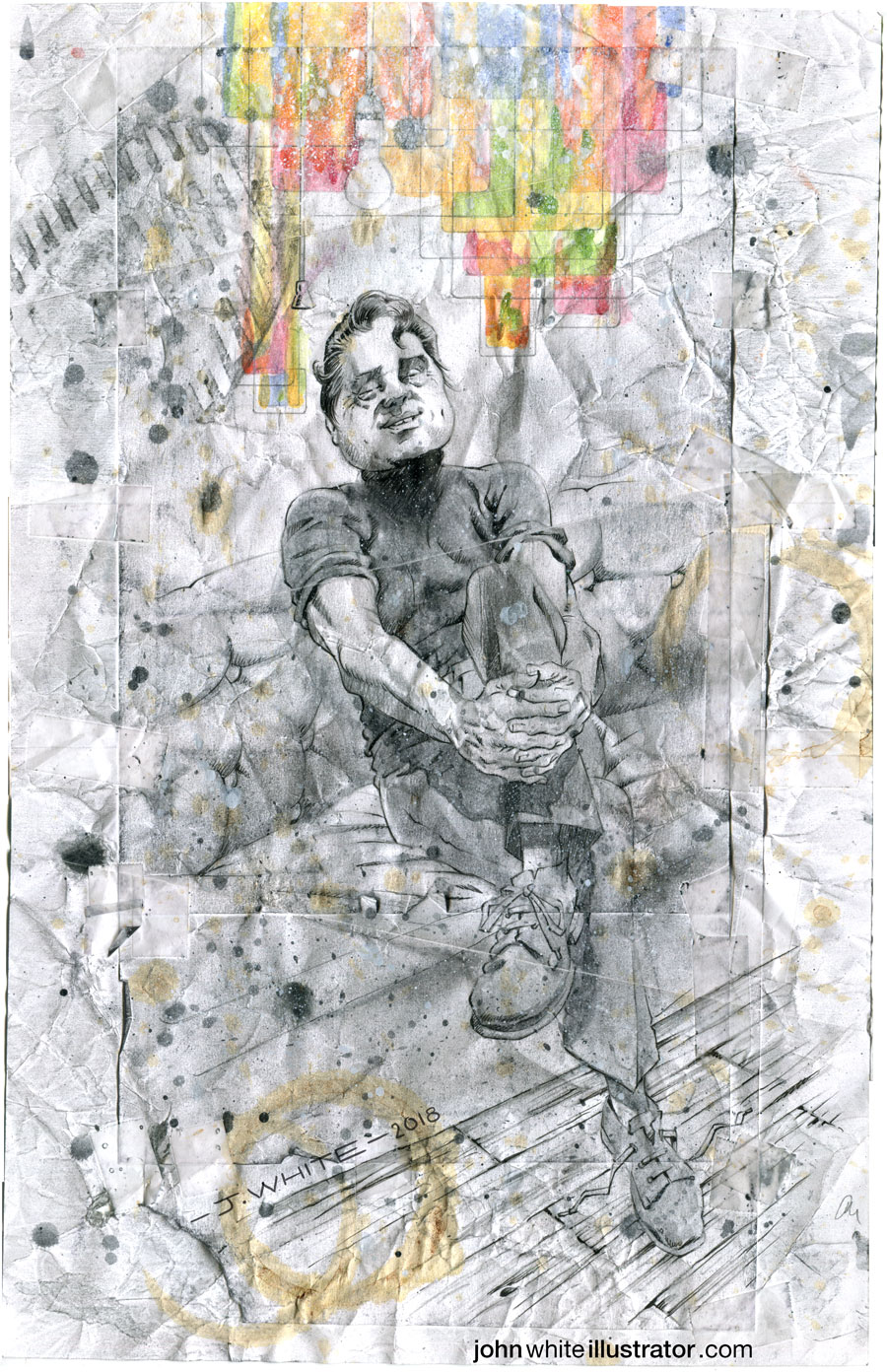
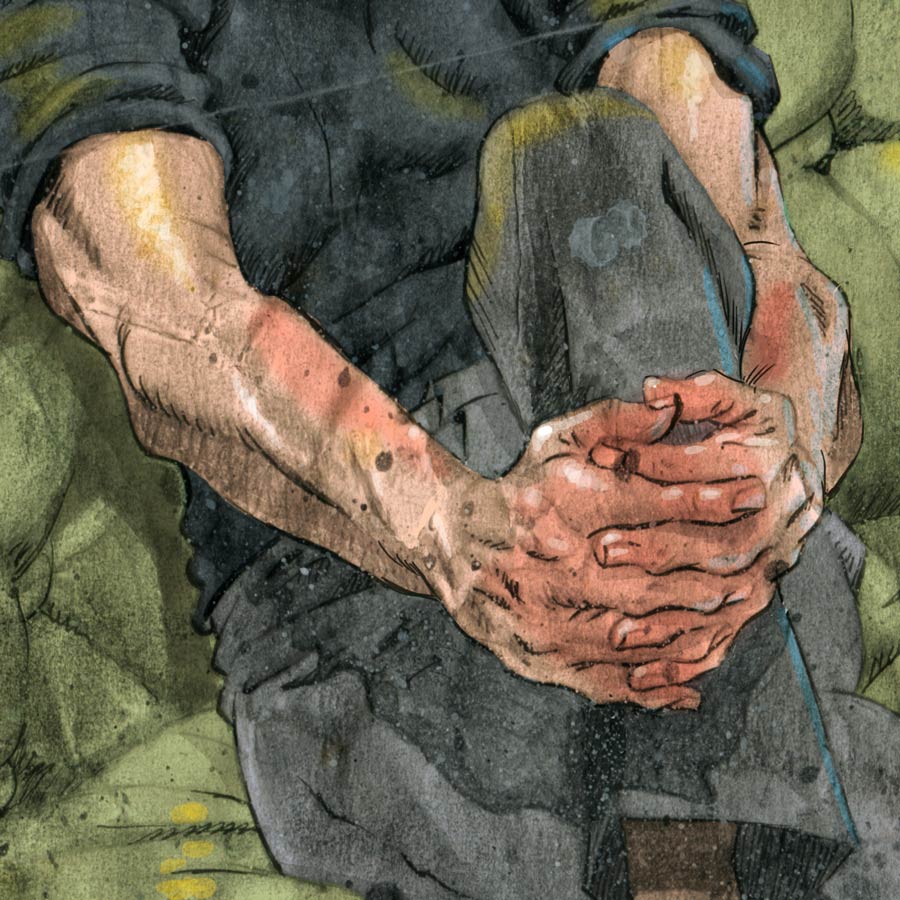
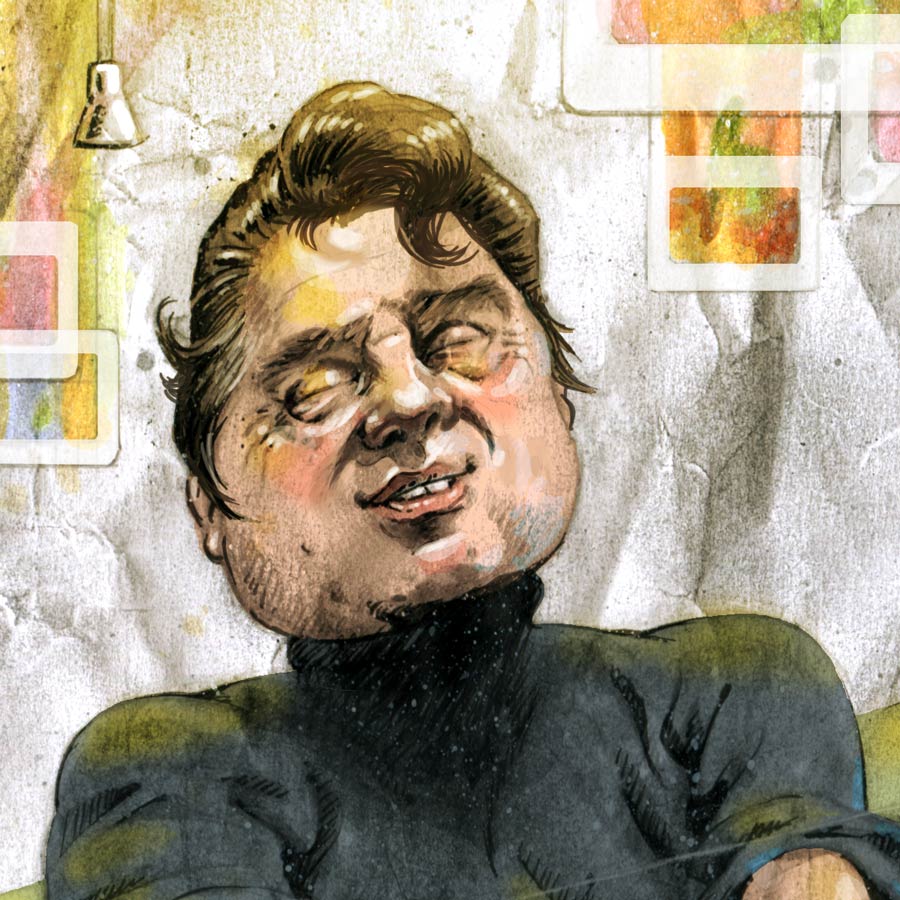
Illustration
I doubt that Francis would have liked this picture very much. Not just because of what it shows and tells, but because he loathed illustration of any kind. He claimed never to do preparatory drawings for his paintings. This was because it would remove much of the spontanaeity from the way he searched for an image by applying paint to the canvas; but also because he felt that once you’ve done the drawing, you’ll then just end up making an illustration of that drawing—in paint. It would be a mere representation of the drawing. Francis believed that if your aim is just mere representation, then why not just take a photograph?
If he is somehow looking at this, I hope he’ll recognise that it’s been done in affection, and is an attempt to give a rarely seen view of his personality.
Process Images
I’ve never wreaked such violence on an illustration before, in my desire to reflect the debris of Bacon’s studio, and the violence he sometimes wreaked on his own paintings. I even crumpled the piece into a ball, rubbed in all over with charcoal, spilled coffee on it, tore it, stamped a boot onto it, and then flattened it out with a steam iron. None of the textures and destruction are faked in Photoshop. All physically real.
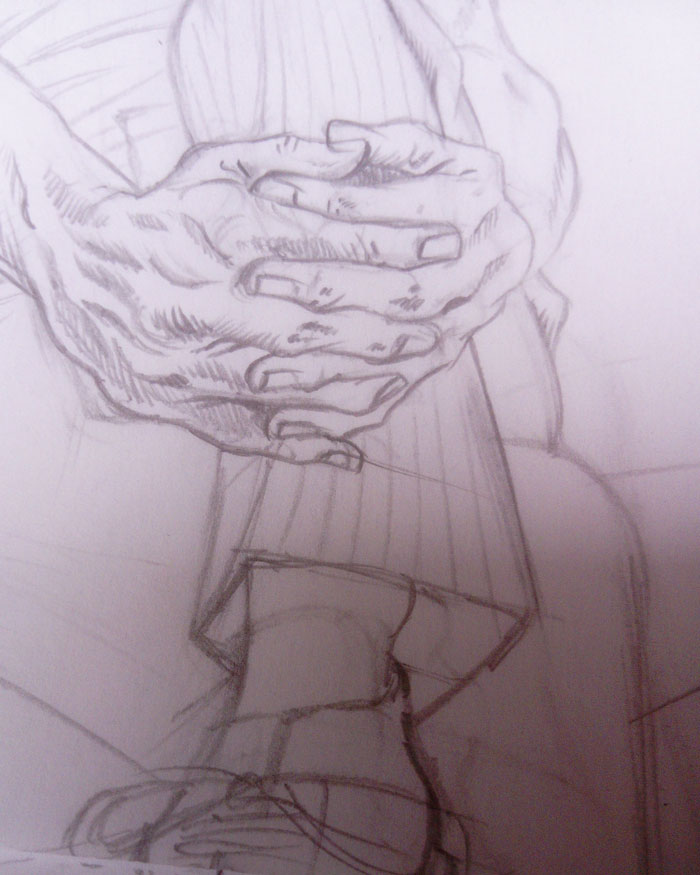
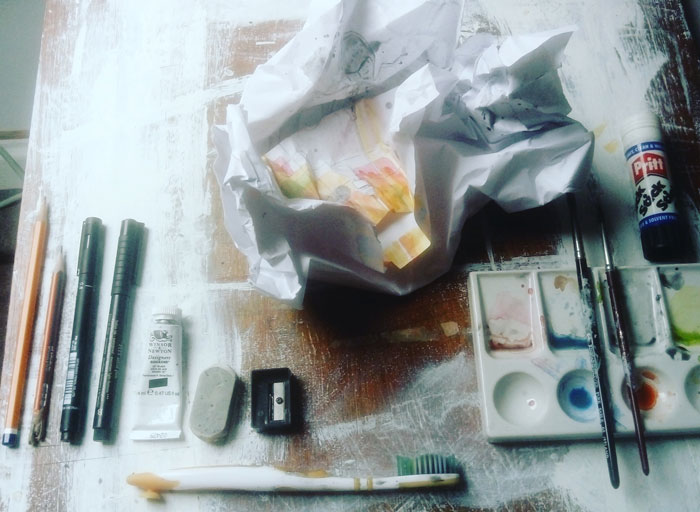
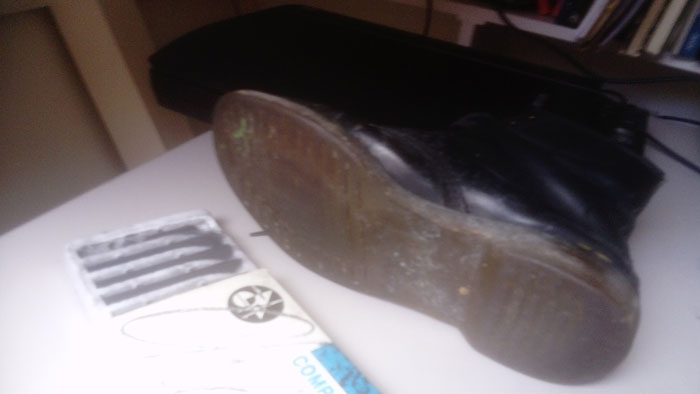

Illustrator: John White
Painting: Goauche, ink, pencil, on board
Colouring: Photoshop
